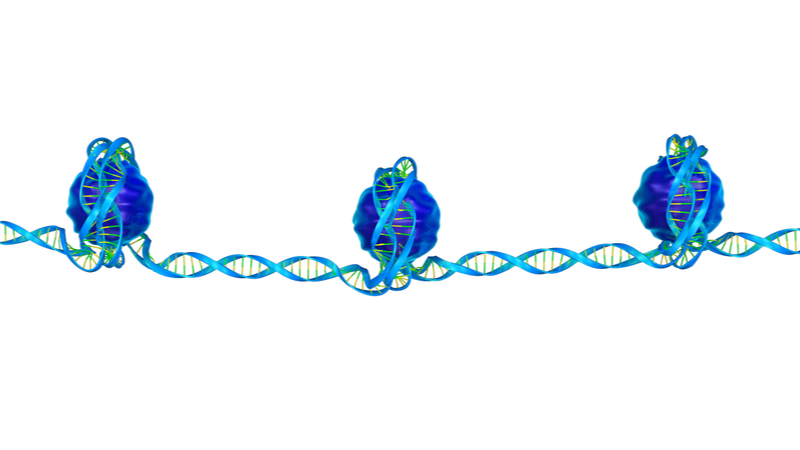A new technique allows researchers to turn epigenetic methylation off and back on again, thus allowing the silencing and unsilencing of certain genes.
A CRISPR breakthrough
CRISPR/Cas9 is a well-known technology for editing the genome, but its potential for epigenetic editing had never been previously explored. With a directed CRISPR memory writer able to methylate and demethylate selected sections of the genome through single-guide RNA (sgRNA), this technology is capable of turning off and on selected, individual genes. The developers of this technique list multiple potential uses in the laboratory, including screening and cellular engineering, and the ability to control epigenetics on a per-gene basis is an enormous game-changer in biological research.
These epigenetic alterations persist as the cell divides, with even a short, transient CRISPRoff expression able to continue reliably silencing genes; over 80% of targeted genes remained silenced after 50 days.
Summary
A general approach for heritably altering gene expression has the potential to enable many discovery and therapeutic efforts. Here, we present CRISPRoff—a programmable epigenetic memory writer consisting of a single dead Cas9 fusion protein that establishes DNA methylation and repressive histone modifications. Transient CRISPRoff expression initiates highly specific DNA methylation and gene repression that is maintained through cell division and differentiation of stem cells to neurons. Pairing CRISPRoff with genome-wide screens and analysis of chromatin marks establishes rules for heritable gene silencing. We identify single guide RNAs (sgRNAs) capable of silencing the large majority of genes including those lacking canonical CpG islands (CGIs) and reveal a wide targeting window extending beyond annotated CGIs. The broad ability of CRISPRoff to initiate heritable gene silencing even outside of CGIs expands the canonical model of methylation-based silencing and enables diverse applications including genome-wide screens, multiplexed cell engineering, enhancer silencing, and mechanistic exploration of epigenetic inheritance.
Stem cells, OSKM, and epigenetic aging
Stem cells are distinguishable from other cells by their epigenetics; cell differentiation, the process by which cells become different types, is determined by the epigenetics of that particular cell. Currently, to create induced pluripotent stem cells (iPSCs) or other types of stem cells, the four Yamanaka factors, collectively known as OSKM, are used. Exposure to these four factors can reset the epigenetics of a cell back into a pluripotent state; this technology allows for the development of stem cell research and potential therapies.
However, if CRISPRoff and CRISPRon can be better perfected, precisely targeted, and reliably performed, techniques based on this technology could potentially be more effective in many cases than the Yamanaka factors; rather than relying on a cell’s own machinery to reset its epigenetics, the epigenetics could possibly be directly controlled instead.
Similarly, it could be much more potent in creating cells that are epigenetically youthful. The purpose of a partial epigenetic reset is to place cells back into a youthful state that is not entirely pluripotent; this process is difficult and requires precise timing and administration of epigenetic reset factors. Directly targeting the epigenetics involved would appear to be a much more ideal solution, but this also requires further refinement of the technology.
Conclusion
CRISPR-based epigenetic modifications are an obvious tool in the treatment for epigenetic alterations, one of the primary hallmarks of aging, but this technique is currently in its infancy. This technique is currently appropriate for cells in the laboratory, not for use in living organisms, and it would take substantial innovation and development before this or a related technique could ever be put to use in directly altering the epigenetics of existing cells in aged people.
However, if CRISPRoff and CRISPRon can precisely target the epigenetics of aging, researchers may be able to study epigenetic alterations far more precisely than the current state of the art allows.








